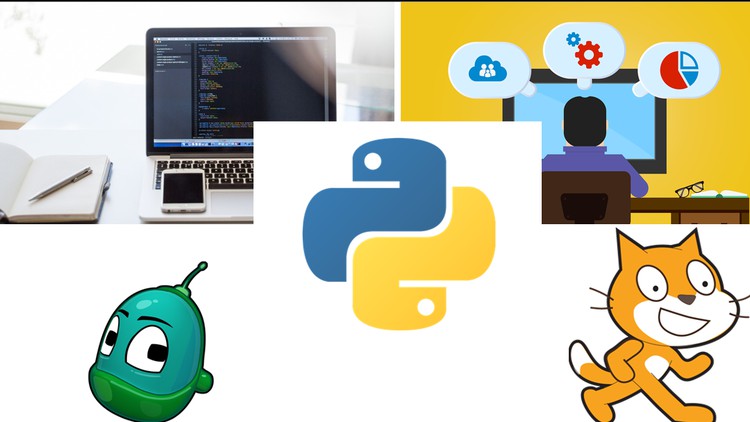
The Coding Course Which Covers Game Development with Scratch 3.0, Kodu Game Lab and Coding Fundamentals
What you will learn
You will learn how to create programs, make games and solve programming problems.
Understand all the fundamental programming principles.
Understand complex programming topics.
Learn to use coding to develop games!
Description
* THIS COURSE COVERS GAME DEVELOPMENT IN SCRATCH 3.0, KODU AND CODING PRINCIPLES TO FILL THE GAP BETWEEN SCRATCH 3.0 AND REAL CODING *
In this course you will be able to develop games in Scratch 3.0 programming language and 3D games in Kodu Game Lab. For the development of these games, is used Scratch 3.0 and Kodu Game Lab because they are educational programming environments that have an easy graphical interface that it will allow us to drag and drop the right blocks of coding.
I promise you that it will be a funny and exciting course that it will motivate you to learn coding in more depth.
Scratch 3.0 is a free programming language and online community where you can create your own interactive stories, games, and animations. Using Scratch, users can create online projects and develop them into almost anything by using a simple block-like interface. When they are ready, they then share, and also discuss their creations with each other. Scratch 3.0 was developed by the Lifelong Kindergarten group at the MIT Media Lab. Scratch 3.0 is designed to help children (ages 8 and up) learn to utilize their imaginations, practice common sense, and, most importantly, to interact with computers.
From Game Development with Scratch and Kodu Game Lab to Real coding with Python
- Block #1: Basic Concepts
Objectives covered by the block
- fundamental concepts: interpreting and the interpreter, compilation and the compiler, language elements, lexis, syntax and semantics, Python keywords, instructions, indenting
- literals: Boolean, integer, floating-point numbers, scientific notation, strings
- comments
- the print() function
- the input() function
- numeral systems (binary, octal, decimal, hexadecimal)
- numeric operators: ** * / % // + –
- string operators: * +
- assignments and shortcut operators
- Block #2: Data Types, Evaluations, and Basic I/O Operations
Objectives covered by the block
- operators: unary and binary, priorities and binding
- bitwise operators: ~ & ^ | << >>
- Boolean operators: not and or
- Boolean expressions
- relational operators ( == != > >= < <= ), building complex Boolean expressions
- accuracy of floating-point numbers
- basic input and output operations using the input(), print(), int(), float(), str(), len() functions
- formatting print() output with end= and sep= arguments
- type casting
- basic calculations
- simple strings: constructing, assigning, indexing, immutability
- Block #3: Flow Control – loops and conditional blocks
Objectives covered by the block
- conditional statements: if, if-else, if-elif, if-elif-else
- multiple conditional statements
- the pass instruction
- building loops: while, for, range(), in
- iterating through sequences
- expanding loops: while-else, for-else
- nesting loops and conditional statements
- controlling loop execution: break, continue
- Block #4: Data Collections – Lists, Tuples, and Dictionaries
Objectives covered by the block (7 items)
- simple lists: constructing vectors, indexing and slicing, the len() function
- lists in detail: indexing, slicing, basic methods (append(), insert(), index()) and functions (len(), sorted(), etc.), del instruction, iterating lists with the for loop, initializing, in and not in operators, list comprehension, copying and cloning
- lists in lists: matrices and cubes
- tuples: indexing, slicing, building, immutability
- tuples vs. lists: similarities and differences, lists inside tuples and tuples inside lists
- dictionaries: building, indexing, adding and removing keys, iterating through dictionaries as well as their keys and values, checking key existence, keys(), items() and values() methods
- strings in detail: escaping using the character, quotes and apostrophes inside strings, multiline strings, basic string functions.
- Block #5: Functions (20%)
Objectives covered by the block (6 items)
- defining and invoking your own functions and generators
- return and yield keywords, returning results,
- the None keyword,
- recursion
- parameters vs. arguments,
- positional keyword and mixed argument passing,
- default parameter values
- converting generator objects into lists using the list() function
- name scopes, name hiding (shadowing), the global keyword
So What Are You Waiting For?
Enroll Today!
Content